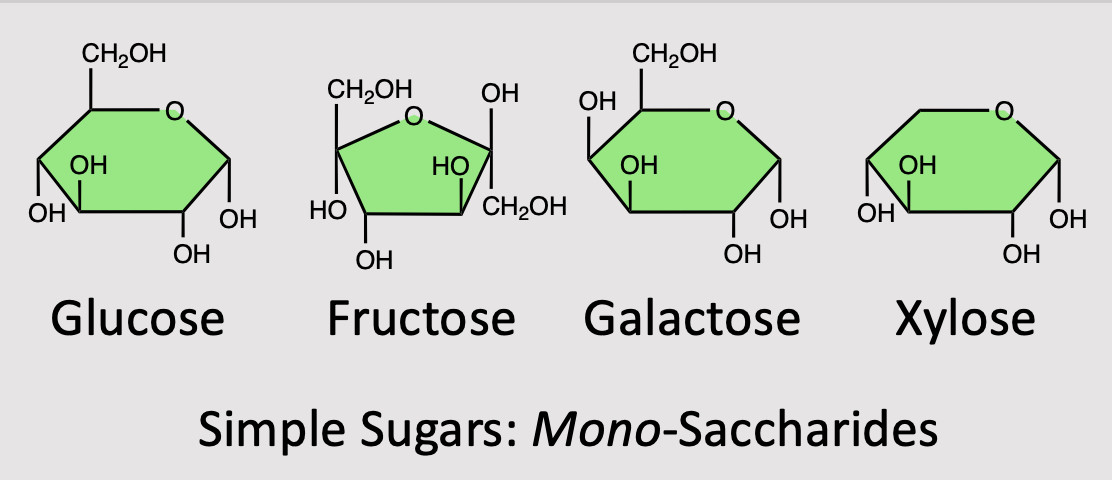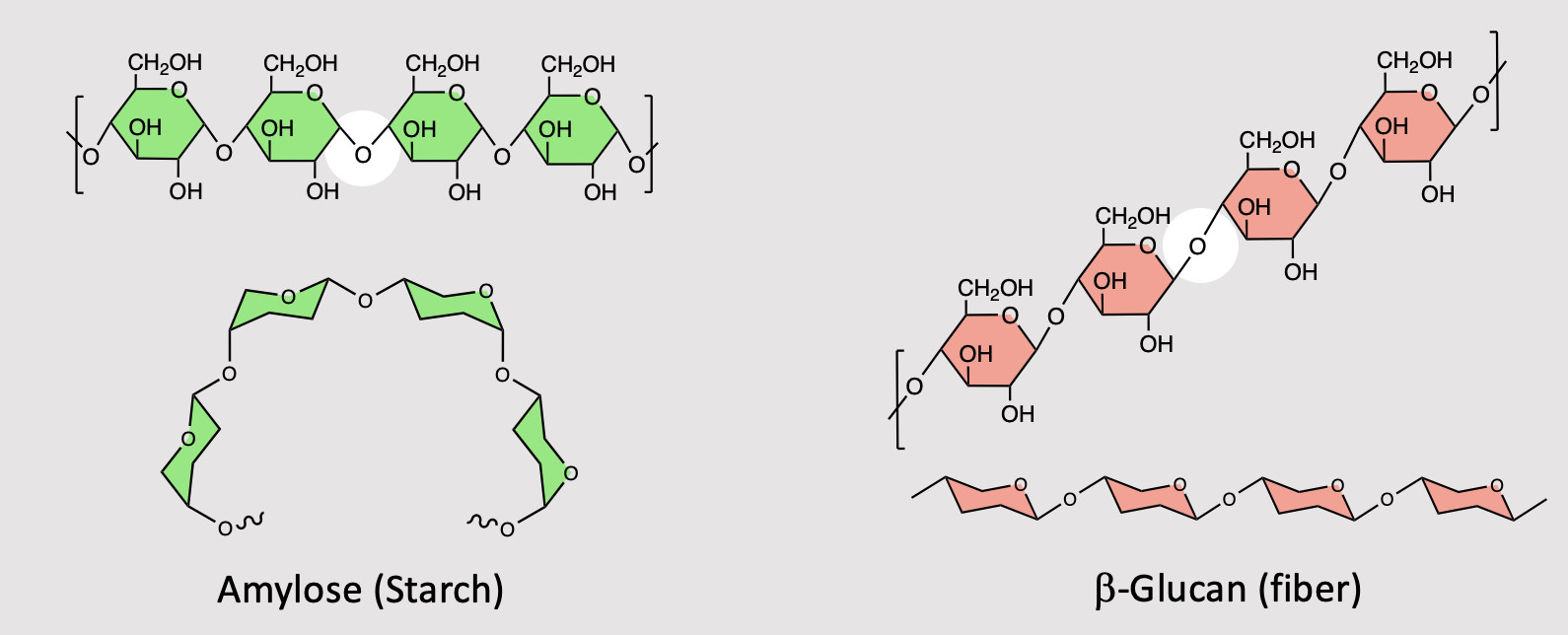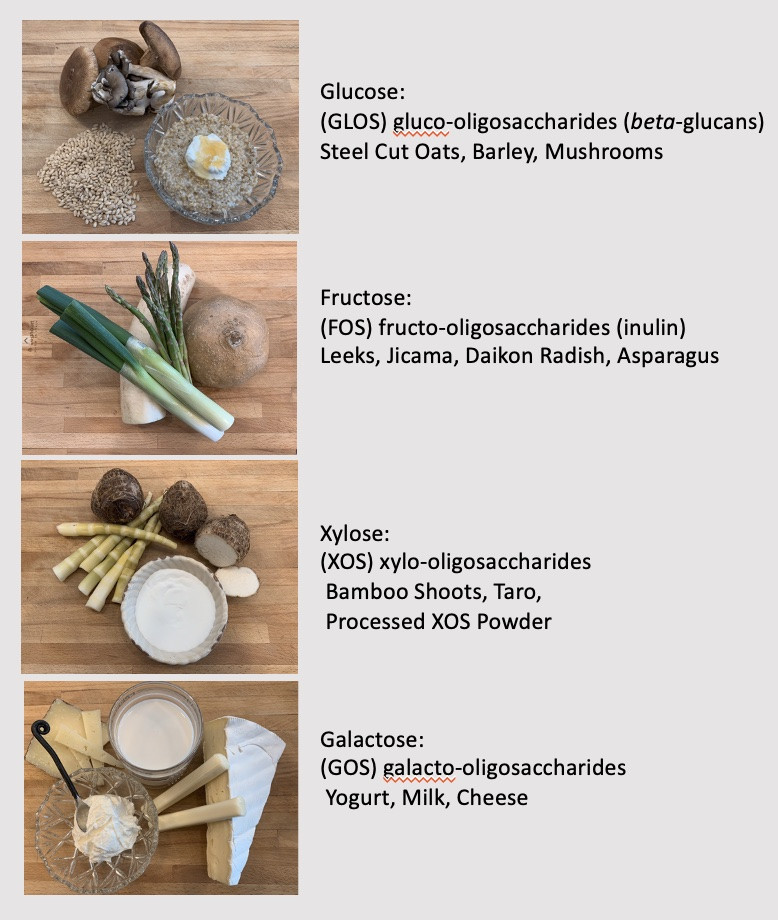

As our attention is being drawn to the distractions of breaking news, pop culture and social media, a quiet revolution in medicine and human health is taking place behind the scenes. The locus of this activity, which is on the cusp of significant advances in our understanding of nearly all major diseases that afflict the Western world, is in the unlikeliest and most unglamorous of places, the biome that exists within the human gut. Today, a multidisciplinary convergence of analytical chemistry, molecular biology and genetic engineering is making and solidifying scientific connections linking diet, our gut biome and health outcomes in laboratories and clinics around the world. Central to these findings is dietary fiber's role in formulating the composition and nourishment of the gut biome.
It has long been observed that cultures around the world whose primary food sources are fiber-rich foods exhibit significant decreased prevalence in health issues typically associated with the Standard Western Diet (SAD). Today, in sub-Saharan Africa and isolated regions of Amazonia, obesity, arteriosclerosis, diabetes, and other metabolic diseases are almost unheard of. Taking a cue from these observations, dietitians and nutritionists issue generic recommendations to increase our daily intake of dietary fiber, but only recently have we begun to unravel the mechanisms of how and why fiber confers its human health benefits. Fascinating new research points to short-chain fatty acid SCFAs-the metabolic by-products of fiber-eating bacteria of our gut biome.

SCFAs provide energy for the barrier cells of our gut wall, and have been found to be important regulatory signaling compounds for a number of biological systems including cholesterol management, mental health and well being, appetite and resting energy expenditure. Furthermore, it is now being established that all fiber is not created equal; certain strains of SCFA-producing bacteria exhibit fiber preferences and the relative proportions of SCFAs produced in the gut are determined by the type of fiber available to the biome.
SO...What is Dietary Fiber?When it comes to fiber, we are all aware of the synthetic varieties like nylon, polyester, etc. We get a sense that they are strong and flexible strands of stringy material that can be fashioned into clothing or molded into products like Kevlar helmets, and components of automobiles or aircraft. With few notable exceptions, most dietary fiber is plant-based and derived from the simple sugars produced via photosynthesis, shown below.

Nature has devised ways to assemble simple sugars much like Lego blocks; they are snapped together into chains of varying lengths and connections that form the structural elements of cell walls, leaves, stems, fruits and roots. All simple sugars and the complex compounds derived from them are members of a broad class of chemical compounds called carbohydrates. You'll find that the individual sugar units are often referred to according to their chemical nomenclature: mono-saccharides. Two sugar units joined together form di-saccharides, such as sucrose (ordinary table sugar; glucose-fructose), lactose (milk sugar, galactose-glucose) and maltose (malt sugar, glucose-glucose). Logically, 3 and 4 units will produce tri- and tetra-saccharides, respectively, but in the literature, 3 units or more are typically referred to as oligo-saccharides; oligo from the Greek derivation of "few".
So, what is the difference between dietary carbohydrates and dietary fiber, and why are they listed along with free sugars on food nutrition labels?
To answer this, it is helpful to consider two different glucose-derived oligo-saccharides. Amylose is the formal name for the linearly-linked form of starch found in potatoes, wheat and rice. The other is linear component of beta-glucan, a fiber found in oats and barley.

As you can see, the chemical make-up of amylose and beta-glucan are the same; both are constructed by snapping glucose rings together. The only difference resides in the orientation of the glycosidic link that connects the individual glucose units (highlighted). Looking at amylose from left to right, the oxygen joining the next ring is always projected downward in what is called the alpha-orientation. In beta-glucan, again, going from left to right, the oxygen is projected upward or in the beta-orientation before it connects to the next sugar unit. This simple and seemingly innocuous change has a profound effect on the biological properties of the compound.
Dietary Fiber and the Biome?When dietary fiber enters the gut, the biome goes to work on it. The microbial species in our biome have figured out a way to use it as their primary food source; bacteria such as Bifidobacteria and Lactobacillus possess the enzymatic machinery to break the “beta” glycosidic bonds in dietary fiber to free up the simple sugars for use in their growth and cellular function. It should be noted that dietary fiber-derived sugars liberated by the biome do not affect sugar levels in our body. Excessive intake of the free sugars fructose and glucose from fruit juice, soft drinks, sweetened food and pastries and donuts cause unhealthy spikes in blood sugar and insulin, but consumption of inulin, an FOS fiber-comprised almost entirely of fructose does not raise nor beta-glucan, comprised of glucose do not. As dietary fiber is disassembled by our biome, the individual sugar units are quickly taken up by the local microbes and are not absorbed systemically.
The distinction between dietary carbohydrates and dietary fiber is based on whether our innate digestive system can degrade the carbohydrate chains into their simple sugar constituents. Carbohydrates bearing the alpha linkage are degraded whereas those with the beta linkage are not.
Some examples of other important dietary fiber are constructed from other plant-derived simple sugars such as galactose, fructose and xylose; a casual trip to your local supermarket provides several foods that are enriched in each type of fiber.

Soluble or Insoluble Dietary Fiber?A consequence of a plant-based diet is the consumption of material that evades the enzymatic assaults from both our innate digestive system as well as the microbes in the gut biome; this material passes through the entirety of the digestive system, perhaps a bit tainted, but chemically unchanged. Mostly, these materials are carbohydrate-based: cellulose and its derivatives, but there are others as well, the most prominent being lignins. The specific structures of these materials is beyond the scope of this discussion, but suffice it to say that they are water insoluble, and are classified as "insoluble fiber." In contrast, the majority of dietary fiber that is degraded by the biome is deemed "soluble fiber". In reality, most oligo-saccharides, including "soluble fiber" are only partially water soluble. For instance, amylose tends to form water-based suspensions like the proteins and fats found in milk.
General Summary
Dietary Carbohydrates are sugars and oligo-saccharides that are degraded by our innate digestive system.
Soluble Dietary Fiber are oligo-saccharides that bypass our digestive system but are degraded by the gut biome.
Insoluble Dietary Fiber is not degraded and only provides biomechanical effect on the digestive process.
Fiber RevolutionMost oligo-saccharides absorb water from the surroundings to form viscous hydrogels. Traditional explanations for the observed health benefits of dietary fiber center around the biomechanical effects they exert upon the digestive process: they tend to add bulk to undigested food making us feel more full (weight loss), the hydrogel sequesters free cholesterol (lower LDL-C), slows sugar absorption (lower free glucose and lower insulin resistance), and owing to their slippery, lubricating nature, they provide the imagined effects on the transit of the material coursing through the digestive tract.
However, in the face of emerging scientific studies and clinical trial outcomes, the current thinking about the benefits of dietary fiber is changing rapidly. While increasing dietary fiber intake continues to be an informed dietary goal, many of the observed biomechanical health benefits are easily explained the biochemical pathways touched by SCFAs. For example, in one of many reports, a JAMA article published in December 2022 summarizes a clinical trial showing that oral administration of the SCFA, butyric acid significantly reduced BMI in a group of obese children. Studies which detail the role of SCFAs in up-regulating HDL particles, increasing cholesterol-clearing LDL-receptors, facilitating cholesterol efflux and biome-mediated cholesterol elimination mechanisms will be the subject of future articles.
Dietary Fiber is nature's carbohydrate delivery system for the gut biome. We feed the gut biome fiber and it produces SCFAs in sufficient concentrations in the very place that they are needed to impart beneficial health effects. This fiber-biome connection requires a well tuned gut biome populated with the right mix of microbes. The good news for citizen scientists is that it is possible to biohack your biome in a relatively short period of time. (see Blame Your Biome). Knowing what foods provide the different types of dietary fiber will assure you feeding your biome a diverse set of inputs to optimize these health effects. Eat your fiber and join the Fiber Revolution.
Got Biome?
Experience rich, flavorful hits with Dummy Vapes, crafted for smooth inhalation and vibrant fruity notes. Each puff provides clean clouds, consistent flavor, and satisfying performance.
Experience rich, flavorful hits with Dummy Vapes, crafted for smooth inhalation and vibrant fruity notes. Each puff provides clean clouds, consistent flavor, and satisfying performance.
Geek Bar Vape combines smooth, rich vapor with bold, vibrant flavors for a satisfying experience. Each puff delivers consistent sweetness, clean clouds, and enjoyable all-day vaping pleasure.
This is a keynote which is near to my verve… Diverse thanks! Faithfully where can I find the contact details for questions? TerbinaPharmacy
You can shelter yourself and your stock by way of being heedful when buying panacea online. Some pharmacy websites control legally and offer convenience, solitariness, sell for savings and safeguards to purchasing medicines. buy in TerbinaPharmacy https://terbinafines.com/product/flomax.html flomax
888starz bet скачать ios http://www.rf2d.org/888starz-zhurnal-ofitsialnyy-sayt-bukmekerskoy-kontory-i-kazino/
888starz bet скачать бесплатно http://www.ferrum.com.pg/index.php/2025/09/06/888starz-poluchayte-sotke-bonus-poluchite-i-raspishites-pervyy-evrodollar-khot-zavtra/
888 starz скачать бесплатно https://cursos.institutofernandabenead.com.br/888starz-igornyy-dom-i-professiya-4000-igr-i-pribylnye-stavki/
888starz скачать на андроид https://birjetkirala.com/888starz-kazino-i-bukmeker-4000-vystupleniy-i-pribylnye-stavki/
888 starz bonus code https://andresbravo.co/888-starz-bukmekerskaya-administratsiya-dolzhnostnoy-zhurnal-vdobavok-luchnik-bk-888-stars-2024/
888starz скачать ios https://academia.masiva.red/2025/09/07/kazino-888stars-dolzhnostnoy-onlayn-veb-zhurnal-igrovye-apparaty-zaregistrirovanie-kabinet-polzovatelya-dostupnoe-geliostat-888starz/
888starz telechargement pour iOS https://www.pgyer.com/apk/fr/apk/app.starz.online
More articles like this would pretence of the blogosphere richer. http://3ak.cn/home.php?mod=space&uid=230361
Это не просто игра, а настоящее испытание для везения и выдержки. Погружаешься моментально. Проверено на https://vodka-registration.site. Выплаты приходят стабильно, это главное. Тут главное — динамика и отдача. Честность и скорость — на высоте. Промокоды придают игре вкус. Азарт здесь настоящий — как в офлайн клубе.
скачать 888 starz https://sumy-times.net/articles/business/888starz_v_raznykh_stranakh_gde_mozhno_igrat_bez_o/?sphrase_id=1008081
888starz ставки на спорт https://fly-inform.ru/news/888starz-defi-platform-casino.html
Facts blog you procure here.. It’s obdurate to on high quality script like yours these days. I truly recognize individuals like you! Take vigilance!! https://doxycyclinege.com/pro/sumatriptan/
Казино — это, прежде всего, атмосфера. И если её нет, никакие выплаты и интерфейсы не спасут. На Vodka Casino зеркало попадаешь в пространство, где продумано всё: от цветовой схемы до музыки, сопровождающей выигрыши. Здесь легко забыть, что ты дома, и представить себя в настоящем зале. Live-дилеры создают ощущение реального присутствия, а интерфейс помогает не отвлекаться ни на что лишнее. Порадовало, что играешь не просто ради процесса, а действительно можешь получить неплохой выигрыш. Слоты не душат донатом, а наоборот — щедро отдают. Поддержка работает как часы, а главное — никакой бюрократии при выводе средств. Именно поэтому возвращаюсь сюда снова и снова.
I’ll certainly bring back to review more. https://aranitidine.com/fr/lasix_en_ligne_achat/
I’ll certainly bring to be familiar with more. https://ursxdol.com/levitra-vardenafil-online/
cialis and dapoxetime tabs in usa - cialis best price how much is cialis without insurance
This is a topic which is virtually to my heart… Many thanks! Exactly where can I upon the acquaintance details in the course of questions?
buying clomiphene pill clomid price cvs clomid buy order generic clomid without rx how much is clomiphene without insurance good rx clomiphene can i purchase clomid online
LeoVegas https://jointjedraaien.nl/images/pages/?leovegas-casino-nederland.html
LeoVegas https://amsterdam-online.nl/wp-content/pgs/leovegas-casino-online-nederland.html
888starz скачать зеркало https://gorobr.ru/images/pages/?preimushestva-online-casino.html
888starz скачать на айфон бесплатно https://neoconomica.ru/images/pgs/sueveriya-igrokov-casino.html
888starz ios https://sbmk.org/css/pgs/pochemu-onlayn-kazino-populyarnu-v-rossii.html
скачать 888starz https://kronverkskoe.ru/norma/pags/?igrovue-avtomatu-v-kino-kak-oni-predstavlenu.html
скачать 888starz на телефон бесплатно https://mytaganrog.com/themes/pgs/chto-takoe-rtp-v-slotah-i-kak-on-vliyaet-na-vuigrush.html
888 starz отзывы https://mytaganrog.com/themes/pgs/chto-takoe-rtp-v-slotah-i-kak-on-vliyaet-na-vuigrush.html
Для удобной игры без ограничений скачать приложение 888starz можно на любое устройство. Это быстрый и надежный способ получать удовольствие от казино и ставок на спорт. Приложение гарантирует высокую скорость работы, мгновенные депозиты и удобную систему управления балансом. Установите и начните выигрывать уже сейчас!
Get the best casino experience on 888Starz Pakistan and win exclusive rewards.
Любители азартных игр теперь могут наслаждаться казино в любое время и в любом месте благодаря удобному мобильному приложению. Оно разработано специально для тех, кто ценит комфорт, высокое качество игр и мгновенные выплаты. В приложении собраны лучшие игровые автоматы, спортивные ставки, лайв-игры и турниры с крупными призами. Чтобы испытать все возможности платформы, достаточно 888starz apk и зарегистрироваться. После установки пользователи получают доступ к программе лояльности, системе кэшбэка и персонализированным предложениям. В приложении предусмотрены быстрые депозиты, удобные платежные методы и возможность моментального вывода выигрышей без комиссии. Также доступна система уведомлений, которая позволяет всегда быть в курсе новых акций, бонусов и турниров. Теперь вам не нужно беспокоиться о доступе к казино – просто скачайте клиент и наслаждайтесь игрой в любое удобное для вас время. Попробуйте мобильную версию прямо сейчас и получите максимум удовольствия от ставок и азартных игр!
Любители азартных игр теперь могут играть без ограничений, используя удобное мобильное приложение, которое сочетает в себе все преимущества онлайн-казино и букмекерской конторы. Теперь вам не нужно беспокоиться о доступе, искать рабочие зеркала или зависеть от скорости браузера – просто установите приложение и наслаждайтесь любимыми играми без ограничений. В приложении собраны лучшие игровые автоматы, карточные игры, лайв-казино с профессиональными дилерами и спортивные ставки с высокими коэффициентами. Чтобы получить полный доступ ко всем возможностям, необходимо 888starz ios и пройти простую регистрацию. После установки пользователи получают мгновенные бонусы, возможность участвовать в программе лояльности, персонализированные предложения и доступ к эксклюзивным турнирам с крупными призами. Приложение поддерживает удобную систему платежей, мгновенные депозиты и быстрый вывод средств без комиссии. Игроки могут использовать систему push-уведомлений, чтобы не пропускать важные события, акции и бонусные предложения. Теперь ставки на спорт и казино доступны круглосуточно – установите клиент, зарегистрируйтесь и начните выигрывать уже сегодня. В приложении также предусмотрена возможность просмотра матчей в лайв-режиме, анализа коэффициентов и участия в эксклюзивных киберспортивных турнирах. Если вы хотите испытать все преимущества мобильного казино, установите клиент прямо сейчас и начните зарабатывать в удобное время без ограничений. Интерфейс приложения интуитивно понятен, а скорость работы гарантирует стабильное соединение даже при слабом интернете. Теперь азартные развлечения всегда будут у вас под рукой – скачайте клиент и наслаждайтесь игрой без границ!
888 starz промокод при регистрации https://zigry.net/skachat-prilozhenie-888starz-na-android/
888starz bet скачать на айфон https://androidonliner.ru/multimedia/888starz-ios-kak-skachat-i-ustanovit-prilozhenie-na-iphone
888 starz http://watersport.org.ru/images/pgs/888starz-top-10-slotov-casino.html
скачать приложение 888starz http://hckolagmk.ru/images/pgs/888starz-strategia-martingeila.html
888starz bet скачать на андроид бесплатно https://fasterskier.com/wp-content/blogs.dir/?888starz-site-officiel_1.html
888starz bet скачать бесплатно https://kgsxa.ru/components/com_newsfeeds/views/category/tmpl/news/3/1/304_888starz_kazino_podborka_igr.html
Станьте частью большого игрового сообщества, зарегистрировавшись на https://888starz-rus.site/. Этот сайт предлагает выгодные акции, турниры с крупными призами и сотни захватывающих слотов. Присоединяйтесь и выигрывайте уже сегодня!
888starz bet telechargement pour iPhone https://carefreetechnology.com/the-impact-of-bug-bounty-programs-on-cybersecurity/#comment-7114
888starz telechargement pour iPhone https://g-r-s.fr/pag/888starz-casino-bookmaker_1.html
telecharger 888 starz sur Android gratuitement https://888stars.wordpress.com/
Ne ratez pas l'opportunite de jouer sur une plateforme de qualite et telechargez 888starz Casino sur mobile. Adapte aux utilisateurs iOS et Android, ce logiciel garantit une performance optimale, une compatibilite parfaite et une interface intuitive qui facilite la navigation. Testez-le des aujourd’hui et profitez de vos jeux favoris en toute liberte !
Les joueurs qui souhaitent profiter des meilleures offres de casino en ligne doivent absolument visiter https://cluny.fr/pgs/888starz-casino-telecharger.html. Cette plateforme regorge de jeux excitants, de bonus reguliers et d’un support client reactif pour garantir une experience de jeu optimale. Ne perdez plus de temps et tentez votre chance des maintenant !
С каждым днем все больше игроков переходят на мобильные версии казино, ведь они обеспечивают мгновенный доступ к любимым развлечениям и позволяют делать ставки в любое удобное время. Теперь вам не нужно переживать о том, что сайт может быть недоступен – мобильное приложение гарантирует стабильную работу и полный доступ ко всем функциям платформы. Вы сможете наслаждаться игровым процессом, участвовать в турнирах, зарабатывать фрибеты и получать персональные бонусы, которые доступны только в мобильной версии. Чтобы испытать все эти преимущества на себе, установите приложение по ссылке 888 starz букмекерская контора официальный сайт и начните выигрывать прямо сейчас.
888starz официальный сайт https://akteon.fr/misc/pgs/casino-888starz-cotedivoire.html
888starz официальный сайт https://manifesto-21.com/pages/888starz-bet-bookmaker.html
Les passionnes de paris sportifs au Burkina Faso trouveront leur bonheur sur bk 888 starz. Ce site propose des cotes competitives, des paris en direct et une interface simple, ideale pour les amateurs de paris dans la region qui recherchent une experience fiable et excitante.
Ш§ЩѓШЄШґЩЃ Ш№Ш§Щ„Щ… Ш§Щ„Щ…Ш±Ш§Щ‡Щ†Ш§ШЄ Ш§Щ„Щ…Щ…ШЄШ№Ш© Щ€ШЈЩ„Ш№Ш§ШЁ Ш§Щ„ЩѓШ§ШІЩЉЩ†Щ€ Ш№ШЁШ± https://888starz-egypt.online/. Щ„Ш§ ШЄЩЃЩ€ШЄ Ш§Щ„ЩЃШ±ШµШ©.
Получите доступ ко всем функциям платформы, установив рабочее зеркало 888starz. Это приложение позволяет обходить любые блокировки, предоставляя полный доступ к ставкам и казино-играм. Вы сможете участвовать в акциях, получать бонусы и наслаждаться азартными играми в любое время. Установка приложения занимает всего несколько минут, и оно идеально адаптировано как для Android, так и для iOS устройств. Пользователи также получают доступ к круглосуточной техподдержке, что делает опыт использования приложения ещё более удобным. Загрузите рабочее зеркало 888starz уже сегодня и начните наслаждаться всем его функционалом.
buying priligy online A lot of thought is now being aimed at RAA system, and in particular, a messenger called bradykinin